by Mike Markowitz
When we think “catapult,” we imagine the types of weapons used for hurling rocks, dead plague victims, or unlucky cows against a castle. But the Greek word katzapeltes originally meant “shield-piercer” (kata = “through,” + pelta = “light infantry shield”), and this was how these machines were first used in Ancient Greece. The earliest catapults were precision antipersonnel weapons—the sniper rifles of antiquity. Within a few generations, however, catapults evolved into siege engines that could knock down city walls made of stone.
Bronze Armor Shielded the Warriors of Ancient Greece From Arrows
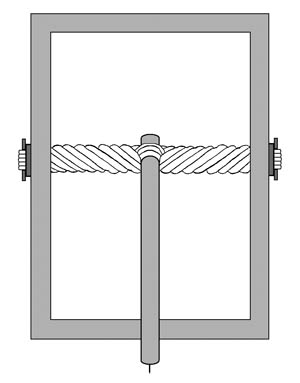 Every ancient civilization knew the Stone Age technology of bow and arrow. In the Odyssey, the eighth century bc epic poem, Odysseus, returning home from the Trojan War, seizes a mighty bow hung on the wall of his hall; a bow so large and powerful that only he had the strength to bend and string it. By the time of the Persian Wars (fifth century bc), Greek armies were so confident in their bronze armor and thrusting spears that they grew contemptuous of missiles, that is, arrows. When Leonidas, the Spartan commander at Thermopylae (480 bc), was told that the Persian army fired arrow volleys so dense they blocked the sunlight, he is said to have sneered and replied, “Very good, then we shall fight in the shade.” Greeks gradually lost the habit of archery, a skill that requires lifelong practice in hunting or competitive target shooting to maintain.
Every ancient civilization knew the Stone Age technology of bow and arrow. In the Odyssey, the eighth century bc epic poem, Odysseus, returning home from the Trojan War, seizes a mighty bow hung on the wall of his hall; a bow so large and powerful that only he had the strength to bend and string it. By the time of the Persian Wars (fifth century bc), Greek armies were so confident in their bronze armor and thrusting spears that they grew contemptuous of missiles, that is, arrows. When Leonidas, the Spartan commander at Thermopylae (480 bc), was told that the Persian army fired arrow volleys so dense they blocked the sunlight, he is said to have sneered and replied, “Very good, then we shall fight in the shade.” Greeks gradually lost the habit of archery, a skill that requires lifelong practice in hunting or competitive target shooting to maintain.
Shooting down a man or horse was one thing; the more difficult problem was, how to attack or defend a fortified city without a storm of missiles to keep attackers away from the gates, or to sweep defenders from the walls. If you couldn’t take a city by trickery (build a Trojan Horse!) or treachery (bribe a gate guard!), the only alternative was to starve it out. This might take years, leaving both sides impoverished. Something new was required to break the stalemate between armies and fortifications. That something was the catapult: a machine for projecting heavy missiles.
The Ancient Military-Industrial Complex Spurred Innovation
Around 400 bc we find the first historical evidence for the use of catapults in war. The place was Sicily, strategic crossroads of the Mediterranean world, where the thriving Greek city of Syracuse was locked in a century-long struggle with Carthage, an aggressive North African trading empire founded by Phoenicians around 700 bc. (Read about these and other battles that shaped the course of history inside Military Heritage magazine.)
In 406 bc, a man named Dionysius (c. 430-367 bc) overthrew the democracy of Syracuse and focused his tyrannical energy, the town’s great wealth, and under-employed shipyards on renewed war with Carthage. Dionysius created the first known military-industrial complex, recruiting artisans and technicians from other cities. In this environment, the normally conservative Greeks were open to innovation. A carpenter, his name unrecorded, invented the “gastraphetes/em>” (literally “belly bow”), ancestor of the crossbow. It allowed a warrior of average strength and little skill to draw and cock a strong composite bow by pressing his full weight into a sliding ratchet mechanism braced against the ground. This done, the warrior then could aim it precisely, and fire a standard arrow or a short bolt with the press of a trigger. The weapon was more accurate and had a greater range than any conventional bow.
A conventional archer’s arrow had to be at least as long as his arm: reaching from the arrowhead, resting against his grip on the bow, to the maximum draw of his bowstring. The archer’s arrows also needed to be thin, so that he could stuff at least 40 into his quiver before going into battle. A catapult bolt simply rested in a groove on the slider of the weapon; it could be short and compact, with less aerodynamic drag than an arrow of equal mass. The Greeks developed an efficient, tapered wooden bolt with a socketed wrought-iron point shaped like a sharp pyramid, designed to penetrate armor.
Oversized Crossbow Evolved Into Catapult
Incendiary bolts were also produced, wrapped with rags soaked in oil or pitch and ignited just before firing (a crewman probably stood by with a jug of water in case the catapult itself caught fire).
Syracusan engineers later enlarged the gastraphetes until it was too heavy for one man to carry. So they mounted it on a tripod or pedestal, precisely balanced on a swivel joint so that it could be easily aimed in any direction. They provided a crude winch to draw it back, with two crewmen working the levers (the hand-crank was a medieval invention: Neither Greeks nor Romans ever discovered it).
At the siege of Motya in 397 bc, a barrage of catapult bolts, ranging as far as three hundred yards, drove back the Carthaginian fleet and allowed the Syracusans to storm across a narrow causeway and scale the fortress walls.
Early Bows Expensive To Make, Difficult To Repair
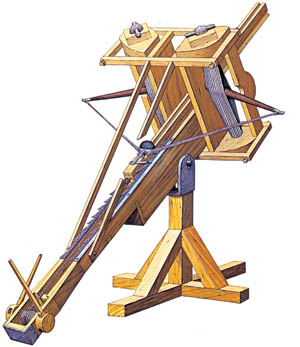 As an aside, Dionysius financed his weapons program by selling Motya’s 15,000 people into slavery. The effect of catapult technology on old ways of thinking was seen when a newfangled catapult brought over from Sicily was demonstrated for Archidamos III, King of Sparta. It is said that he lamented, “O Hercules, man’s courage is of no use any more!” More powerful catapults were coming, and they would cause even greater wailing.
As an aside, Dionysius financed his weapons program by selling Motya’s 15,000 people into slavery. The effect of catapult technology on old ways of thinking was seen when a newfangled catapult brought over from Sicily was demonstrated for Archidamos III, King of Sparta. It is said that he lamented, “O Hercules, man’s courage is of no use any more!” More powerful catapults were coming, and they would cause even greater wailing.
The composite bow, which the Greeks adopted from the Scythian horse archers of the Ukrainian steppes, was complex and costly, laminated from layers of hardwood, horn, and animal tendon, then wrapped in leather and bound together by exotic adhesives that required long curing times. Reportedly, the best glue was made from the skin of the roof the mouth of the Volga River sturgeon. But when such a bow eventually snapped under tension, it couldn’t be repaired in the field. Clearly something cheaper, more durable, and “soldier-proof” was needed to store energy and release it suddenly.
The Torsion Engine: A Technical Breakthrough
Around the middle of the fourth century bc appeared the first artillery that was based on torsion (“twisting”) rather than tension: the oxybeles (“sharp-projectile”). The secret was the same ox or horse sinew used for composite bows. Sinew or tendon is the tough, flexible connective tissue that attaches muscle to bone. Carefully cured (we don’t know exactly how, but olive oil was said to “nourish” the fiber) and possibly braided with human or horse hair, a thick bundle of sinew, wrapped around a lever and fixed in a wooden frame, could be repeatedly twisted and released without breaking. Two such levers connected by a sinew bowstring made a powerful and durable weapon.
Greek engineers over the next two centuries developed a variety of bolt-shooting and rock-throwing torsion engines, carefully working out the ideal proportions for best performance at minimum weight. The critical dimension was the diameter of the sinew “spring” or torsion bundle. For a bolt shooter, the ideal diameter was one-ninth the length of the bolt. For a rock thrower the ratio was more complex; the diameter (d) of the bundle in dactyls (about 3/4 inch) should equal 1.1 times the cube root of 100 times the mass of the ball (m) in minas (about a pound):
Saddled with a numerical notation system even more awkward than Roman numerals, the Greeks developed sophisticated geometric methods to compute cube roots.
High Value Placed On Engineering Talent
These machines evolved as siege engines, naval weapons, and even field artillery, serving long after the fall of the Roman Empire in the West (Rome’s military engineers and technicians were often natives of Greek cities).
King Philip II of Macedon (382-336 bc) was a key figure in the development of torsion artillery. He understood the power of catapult bolts, having lost an eye to one at his siege of Methone in 353 bc and witnessing his army badly shot up by the massed gastraphetes of the Phoenician general Onomarchus. With the revenue of his silver and gold mines, Philip was willing to pay well for top talent. Well known is the fact that he recruited the leading philosopher of the Greek world, Aristotle, as a tutor for his son, Alexander. Similarly, Philip recruited top engineers to design his siege engines. So vital was their contribution that we even know their names: Polydias, and his students Diades and Charias.
Alexander’s siege of the Persian-controlled fortress of Halicarnassus (now Bodrum, Turkey) in 334 bc is the earliest reference to torsion engines called lithoboloi; or “stone-throwers,” designed to smash walls as well as men. Rock throwers needed a special bowstring with a braided pouch; this in turn required a different trigger mechanism. Just as modern artillery is rated by its caliber, the lithobolos was rated by the weight of the projectile: The Greeks adopted the Phoenician mina (0.96 pounds) and talent (57.6 pounds). Typical engines threw a 30-mina rock; the heaviest were rated at 3 talents. Bolt-shooters were rated according to the length of the projectile: the “3-span” (27-inch) bolt had the longest range (up to seven hundred yards).
Alexander Wounded By A Catapult
 The genius of Diades, his chief engineer, enabled Alexander to conquer the rich island fortress of Tyre in 332 bc. The Tyrians massed their own catapults on their walls and ships. But Diades lashed ships together to make platforms for even bigger engines, and anchored them with chains so Tyrian swimmers could not cut the mooring lines. After Tyre fell, the catapult that finally breached the seawall was hauled into the city’s temple and solemnly dedicated by Alexander to the god Melqarth (the Greeks identified him with Hercules).
The genius of Diades, his chief engineer, enabled Alexander to conquer the rich island fortress of Tyre in 332 bc. The Tyrians massed their own catapults on their walls and ships. But Diades lashed ships together to make platforms for even bigger engines, and anchored them with chains so Tyrian swimmers could not cut the mooring lines. After Tyre fell, the catapult that finally breached the seawall was hauled into the city’s temple and solemnly dedicated by Alexander to the god Melqarth (the Greeks identified him with Hercules).
While leading an assault on the ancient walls of Gaza in 332 bc, Alexander was gravely wounded by a catapult bolt that penetrated both his shield (bronze sheet over a wood core) and his body armor (laminated of stiffened linen, leather, and iron plate). When his army nearly mutinied at Opis in 324 bc, Alexander shamed them by displaying his injuries: “There is no part of my body but my back that has not a scar; not a weapon a man may grasp or fling the mark of which I do not carry upon me. I have sword cuts from close fight; arrows have pierced me, missiles from catapults bruised my flesh; again and again I have been struck by stones or clubs—and all for your sakes…”
In 329 bc swarms of Scythian horse archers opposed Alexander’s crossing of the wide, swift river Jaxartes (Syr-Darya, in Kazahkstan): “… the catapults, at the word of command, opened up on the Scythians who were riding along the edge of the water on the further side. Some of them were hit; one was pierced through both shield and breastplate and fell dead from his horse. The Scythians were taken completely aback by the long range of the catapults, and that, together with the loss of a good man, induced them to withdraw a short distance from the river ….”
Artillery Technology Advances, Courtesy Of The Arms Race
That was just enough of an opening for Alexander to lead his troops across, on rafts made of skins stuffed with straw. Alexander’s torsion oxybeles firing a 27-inch bolt could penetrate a Scythian shield at four hundred yards. Easily disassembled for transport by mule or ox carts, the heavy wooden frames were reinforced with bronze or iron. However, the all-important sinew torsion springs needed protection from weather: Too much sun would dry and crack the fibers, too much moisture would leave them limp.
Alexander’s conquest of the Persian Empire unleashed two centuries of economic boom for the Mediterranean and the Near East. But his squabbling successors were often egotistic military dictators. It was the perfect recipe for an era of creative, advancing technology driven by chronic arms races.
Collecting Projectiles To Gauge Enemy Capacity
Demetrius “The Besieger” (died 283 bc), son of one of Alexander’s generals, was a legendary war-machine builder. For his siege of Rhodes in 304 bc, his engineer, Epimachus, designed the ßhelepolis (“City-taker”). It was an eight-wheeled iron-plated tower nine stories tall. Over two hundred gunners manned three-talent (180-pound) catapults on the lowest deck, lighter stone throwers on upper decks and bolt-shooters on the top two floors; some 20 pieces in total. Hinged wooden gunports, padded with wool and ox hide, protected the artillery. The beast weighed 150 tons and was pushed forward by a thousand men. It failed. The biographer, Plutarch (c.46-120 ad), explains why: “In the morning, Demetrius caused his people to collect the projectiles fired during the night by the Rhodians and found that they numbered 800 flaming projectiles and 1,500 catapult bolts. So great a number in a single night made him realize the vast resources of the city.”
Demetrius was simply outgunned. Modern archaeologists have found Rhodian catapult stones, neatly engraved with a letter indicating the weight, and slightly flattened on one side so they wouldn’t roll around in the heat of battle.
Catapult Concepts Exceeded Ancient Technology
To overcome the limitations of sinew torsion springs, which required constant adjustment, the Alexandrian engineer Ctesibius experimented with catapults using hinged levers pressed against bronze compression springs. But no ancient alloy was sufficiently “springy” for a practical weapon. Forged steel, resilient enough for a crossbow, was not perfected until about 1400 ad by Italian blacksmiths. There is even a recorded design for a pneumatic catapult, in which the torsion springs were replaced by pistons compressing air in cylinders. But the exact tolerances this design required were simply beyond the reach of any metalworker until precision gauges and machine tools were developed in the 19th century.
While ancient technology may have limited the power of catapults, there still were ingenious examples of weapons that overcame other operational shortcomings. Dionysius of Alexandria, who worked in the Rhodian arsenal, designed a magazine-fed repeating bolt-shooter, the polybolos, perhaps the most complex machine of classical antiquity. A chain drive (like a motorcycle chain running over rotating sprockets) simultaneously pulled back the bowstring, powered a cam-actuated rotary feeder, and cocked and released the trigger at the right time. The gravity-fed hopper was loaded with 19-inch bolts. A technical description is preserved in the artillery manual of Philon, who lived around the end of the third century bc. Some details are remarkably similar to a modern 25mm automatic cannon, the Hughes “Chain Gun.”
Ancient “Machine Guns” Were Highly Accurate
An ancient machine gun may seem improbable, but a 19th-century German engineer officer named Schramm actually built one and demonstrated it to Kaiser Wilhelm. Schramm used bicycle chain, and his machine was reportedly so accurate that the second bolt to hit a target could split the first bolt, like Robin Hood’s mythical arrow. Ironically the polybolos was probably too accurate; an ancient writer complained that the lack of dispersion in the shot pattern made for overkill against man-sized targets. Medieval Chinese developed a much simpler lever-action 12-round repeater crossbow that remained in use until the 19th century.
In 211 bc the Romans conquered Syracuse after a long siege starring Archimedes, the legendary Greek scientist and engineer. Archimedes built the heaviest catapult ever recorded, firing a three-talent (almost 180-pound) stone. But he also understood the role of lighter weapons: “Archimedes had constructed artillery which could cover a whole variety of ranges, so that while the attacking ships were still at a distance he scored so many hits with his catapults and stone-throwers that he was able to cause them severe damage … Then, as the distance decreased and these weapons began to carry over the enemy’s heads, he resorted to smaller and smaller machines, and so demoralized the Romans that their advance was brought to a standstill.”
The Science Fiction writer Arthur C. Clarke once observed, “Any sufficiently advanced technology is indistinguishable from magic.”
Archimedes’ Legend Was Enough To Strike Fear Into Adversaries
The fanciful stories of Archimedes’ war machines (mirrors focusing sunlight to burn Roman ships; a giant lever with a claw to lift ships out of the water and dash them against the seawall) suggest the shock and awe that demoralized the Romans: “…such terror had seized upon the Romans, that, if they did but see a little rope or a piece of wood from the wall, instantly crying out that there it was again, Archimedes was about to let fly some engine at them, they turned their backs and fled…”
Eventually, the Romans copied Greek artillery technology, simplifying and adapting it to their own relentlessly systematic way of making war. Nevertheless, much of what made catapults work was plain old sweat.
Except for the use of incendiary weapons, ancient warfare relied almost entirely on the muscle power of men and animals. This was particularly true for torsion artillery, which took so much labor to build and such exertion to move and employ. The torsion catapult remained a standard siege weapon until the 12th century, when the spectacular gravity–powered trebuchet appeared. The brute-force idea of a throwing-arm driven by a counterweight never seems to have occurred to the Greeks or Romans. The trebuchet needed a massive tree trunk as its main beam, and prime timber was scarce in the Mediterranean world, due to deforestation.
Ancient War Machines Kept Alive By Enthusiasts And Re-enactors
There is much about Greek catapults that we do not know, and may never reconstruct. The surviving evidence is limited to a handful of Byzantine copies of ancient manuscripts, some crude representations on pieces of sculpture, and a few corroded metal parts excavated by archaeologists. Today, most of what we know has been painstakingly reconstructed by classical scholars, engineers, hobbyists, legionary re-enactors, and enthusiasts who love to hurl heavy objects long distances with great force.
Originally Published September 3, 2015
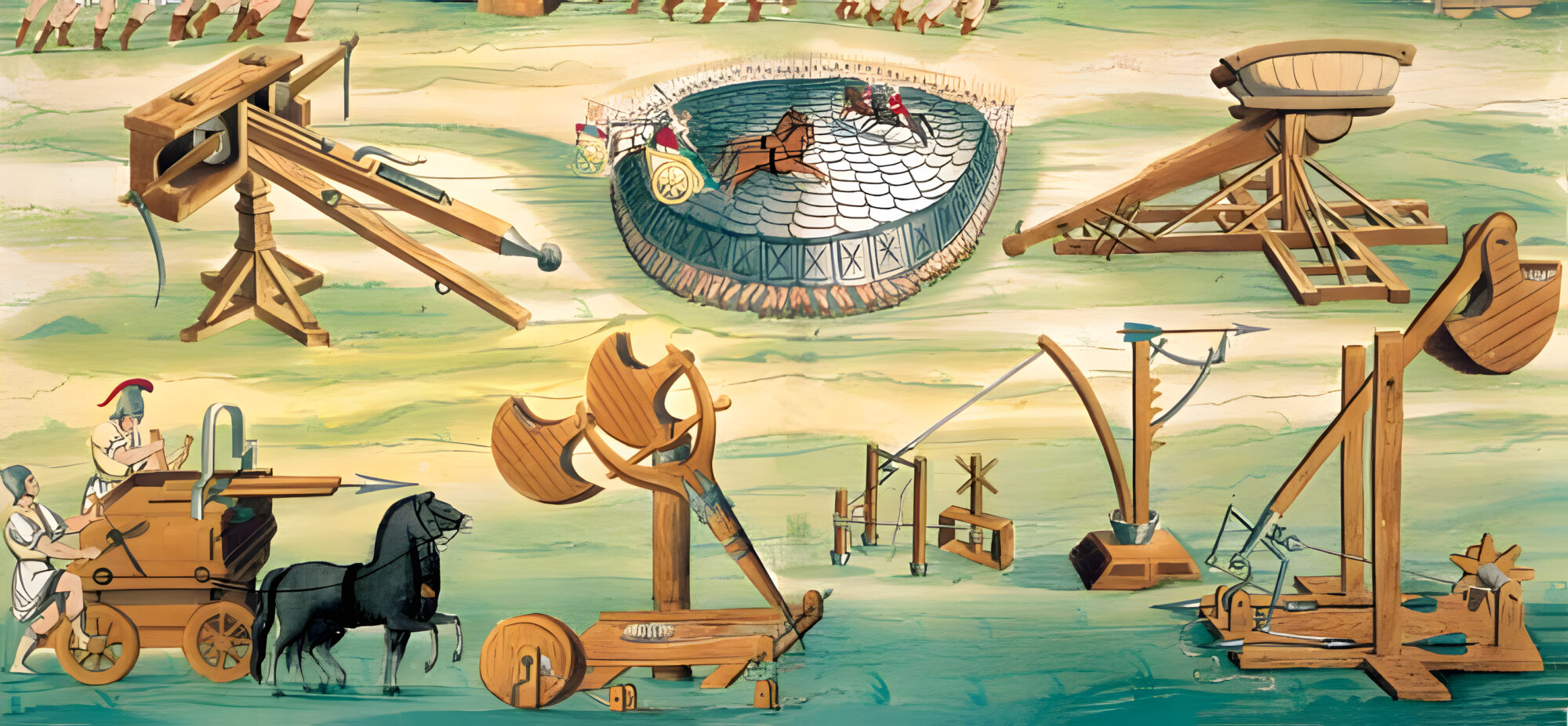
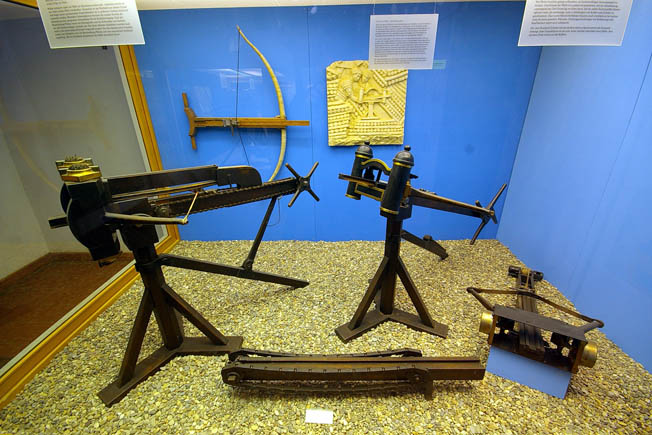
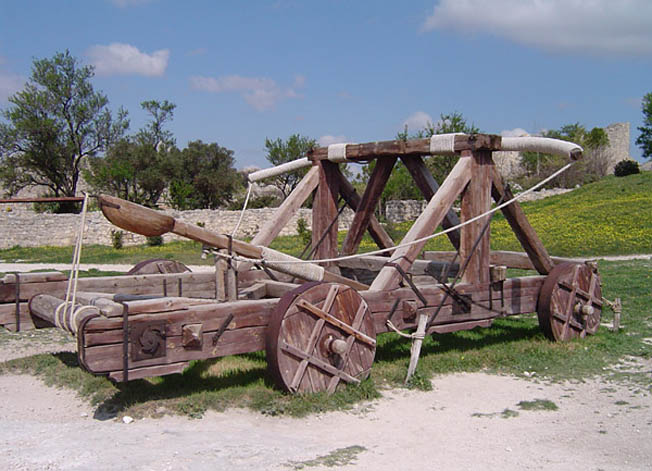

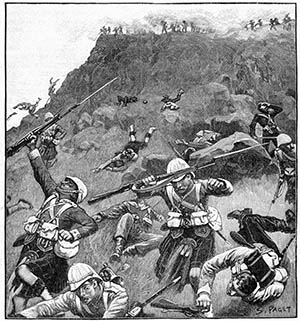
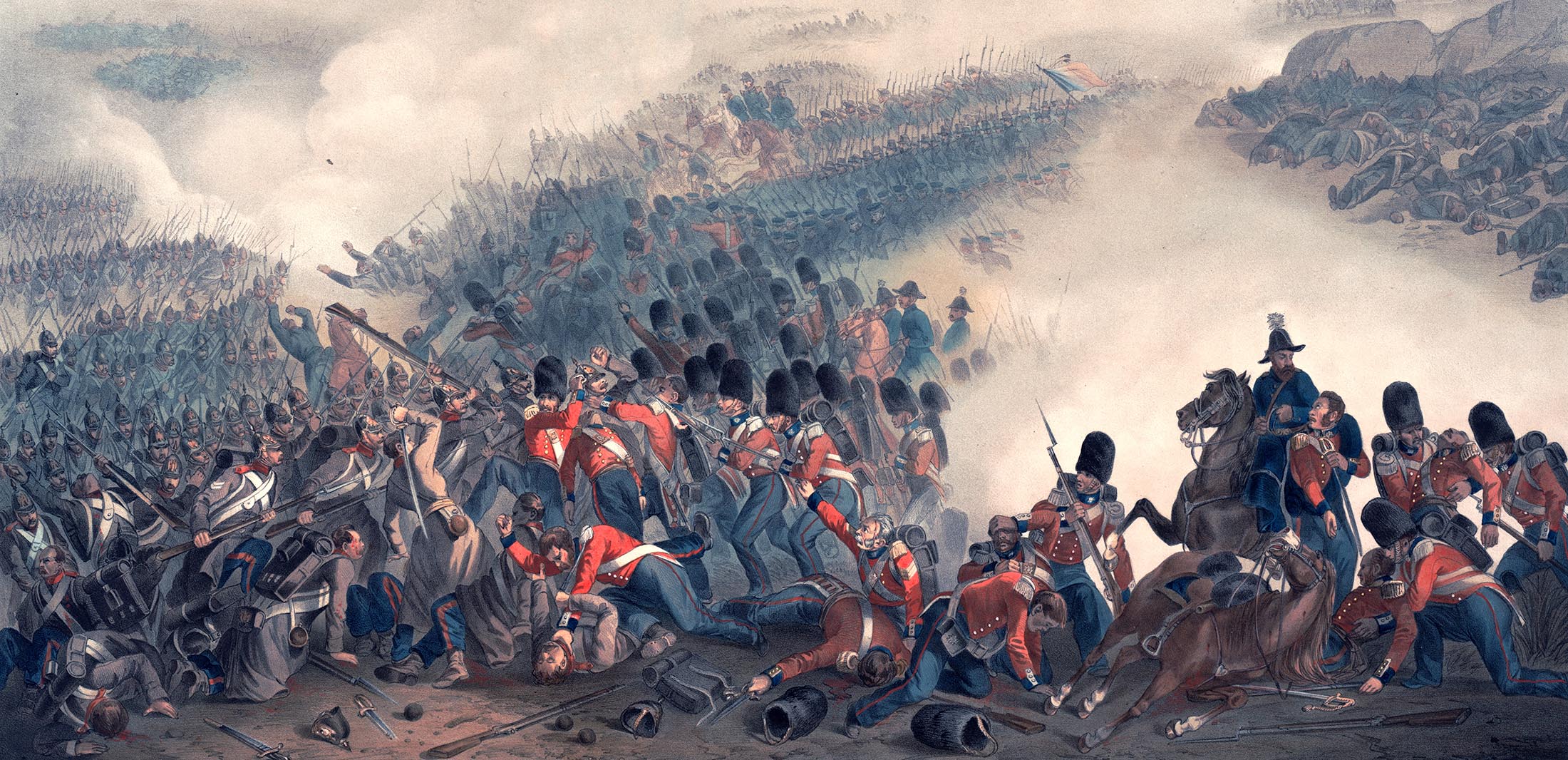





Join The Conversation
Comments
View All Comments